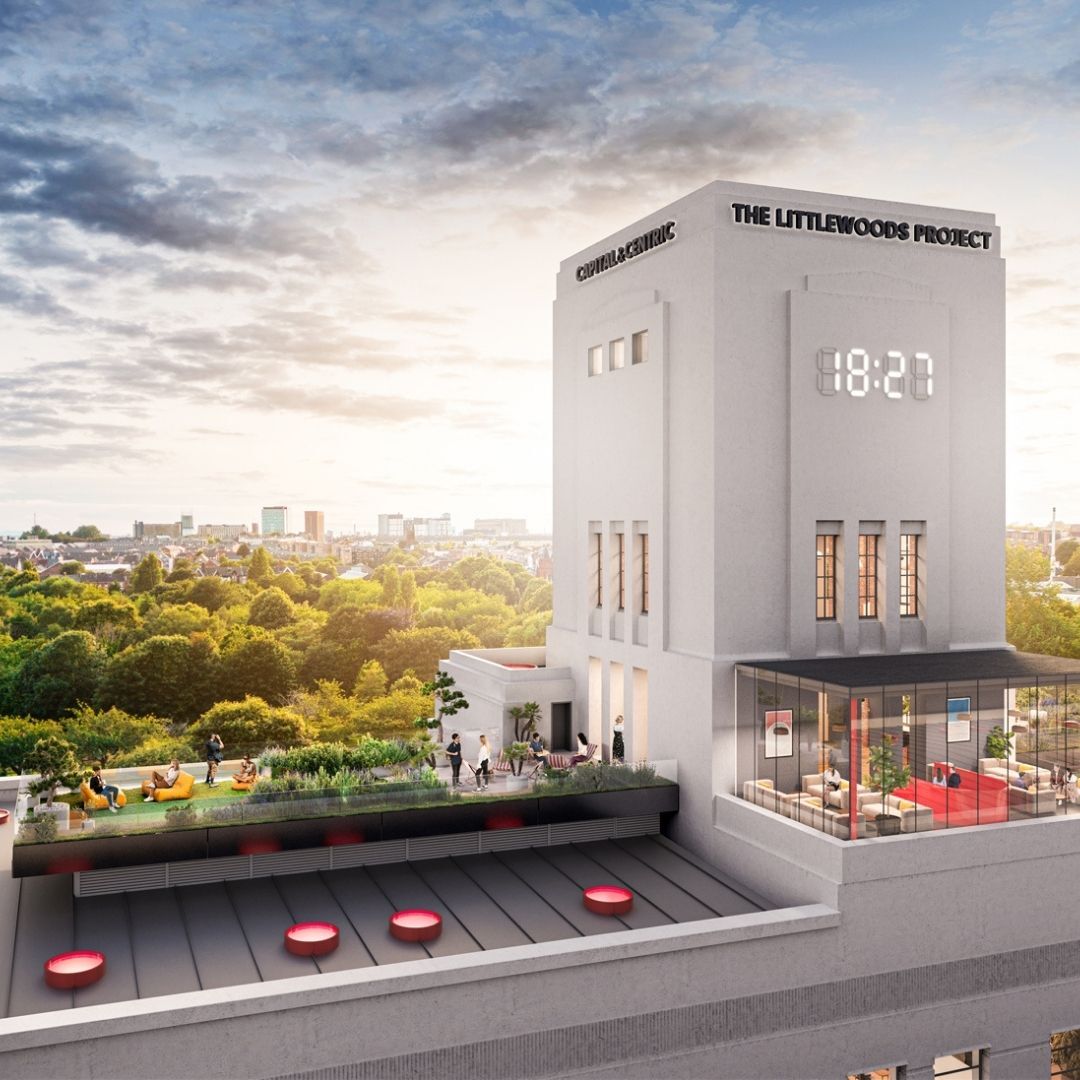Project showcase
The Littlewoods Project, Liverpool, for Capital & Centric, Liverpool City Region Combined Authority and Liverpool City Council, with shedkm

The £57m refurbishment of Liverpool’s iconic 1930s building targets big budget production, as a base location to complement extensive outdoor filming opportunities. Two new 1,858sqm studios, screening and performance spaces – open to the public - with an existing hangar to feature five cinema screens, a performance space and a food hall. A working clock will be reinstated on the iconic tower, with visitors able to enjoy the city view from new rooftop gardens.
Who is on the project team? (designer, consultants, etc)
Architect: shedkm
Structural and civil engineers: Curtins
Landscape architect: Planit
Fire consultant: Design Fire
Project manager: Cinns/Chroma
Cost consultant: Arcadis
Principal designer/CDM: JDS
Planning: Aston Hale / Avison Young
Describe the context of this project, its neighbourhood and people.
The Littlewoods Project will bring a world-class film and TV campus to Liverpool, transforming access to creative sector opportunities and repurposing an iconic heritage building. It responds to mounting demand on the city from international producers. 2023 saw its busiest years to date, with 301 productions filming there, boosting the local economy by £43.6 million. From Taylor Swift to The Batman, Liverpool has an open-arms approach to production. Work has now begun to restore the 1930s Littlewoods building on Edge Lane – an art deco statement on the skyline – into a buzzing northern home for creative industries. The site will uniquely be a home for media production, from ideation, through production, promotion and even distribution, offering the chance for a producer to create, premiere and then screen their content, all in one spot. The inner-city project is in one of the top 20% most deprived wards nationally, and is aimed at breaking down barriers to get local people into skilled and well-paid jobs on their doorstep. To ensure those skills aren’t imported from elsewhere, the Littlewoods Project will be home to a skills provision, helping locals upskill or reskill to capture the opportunity. The sprawling campus is being developed in stages, with Capital¢ric first restoring a 60s storage building into the Bunker – creative workspace that won BCO, RIBA and AJ awards, and is fully occupied. A detailed planning application was submitted in 2023 for the Littlewoods Project to Liverpool City Council, with works starting on site in December.
Please describe your approach to this future place and its mix of uses. How will it function as a vibrant place?
A key driver of the Project has been to deliver a buzzing destination that writes a vibrant next chapter. Central to this has been plans to make the site more accessible to the surrounding community, fostering a sense of local pride. It’ll be the first time in the building’s history that it has been open to the public, with planned spaces including: A multi-purpose screening and performance zone with five small format cinema screens, an outdoor performance space and permanent foodhall. A lush courtyard with extensive greenery and a walk of fame that pays homage to local screen stars past and present. A new public link between the site and the neighbouring Wavertree Park. These spaces will fully integrate with the offices, workshops, studio support facilities and an education facility (housed in the two restored wings of the building) alongside new-build studio space. Retained existing elements will maintain the identity of the Littlewoods building that people have come to love, with a shared centre informed by the tower as a renewed focal point. The surrounding community has been involved from a very early stage in the process, with activities including: Meaningful pre-application consultation on the plans which demonstrated almost universal support. Working closely with key organisations, such as the Littlewoods95 Group, made up of people with a personal connection to the building and keen interest in its future. Well-attended pop-up charity events, that brought hundreds of people to the site and supported local causes.
What is the environmental impact of the project? How will the carbon use and material impact of the development be mitigated? What is the sustainability strategy?
Capital¢ric is a social impact developer, with many of its projects featuring the restoration of historic buildings (many of which are at risk of being lost). The considered repurposing of the former Littlewoods building will save over 5,000 tonnes of embodied carbon – with adaptive re-use widely accepted as the best way to reduce such environmental impact. And at 232,694 sq.ft (NIA) of floorspace, the opportunity here is significant. The team has also joined forces with the University of Liverpool School of Architecture to consider the embodied carbon impact of the project, with students undertaking a 12-week ‘Sustainability In Practice’ module to calculate embodied carbon over its lifetime. The collaboration will see students present findings to architects shedkm and Capital¢ric, with practical implications for carbon savings. The Littlewoods Project will be a low-carbon campus, with a ‘very good’ BREEAM rating. A fabric-first approach is being taken to reduce energy demand, with a focus on maximising air tightness, eliminating thermal bridging, optimising insulation, solar gain and energy efficient ventilation. The U-values, air permeability and ventilation targets all aspire to Passive House design standards along with the use of low and zero carbon renewable technologies. Both solar and PVs are intended to be installed to generate energy for the site’s operations, with Air Source Heat Pumps powering the heating system avoiding a reliance on gas. Where new build is required, existing and locally-sourced materials will be used to reduce waste, transportation and further promote a low embodied carbon approach.
Festival of Pineapples
24-26 February 2026
Pineapples prize giving night
April
Pineapples at Festival of Place
10 June 2026
© The Pineapples - Tweak Ltd. 124 City Road, London, EC1V 2NX. Tel: 020 3326 7238




